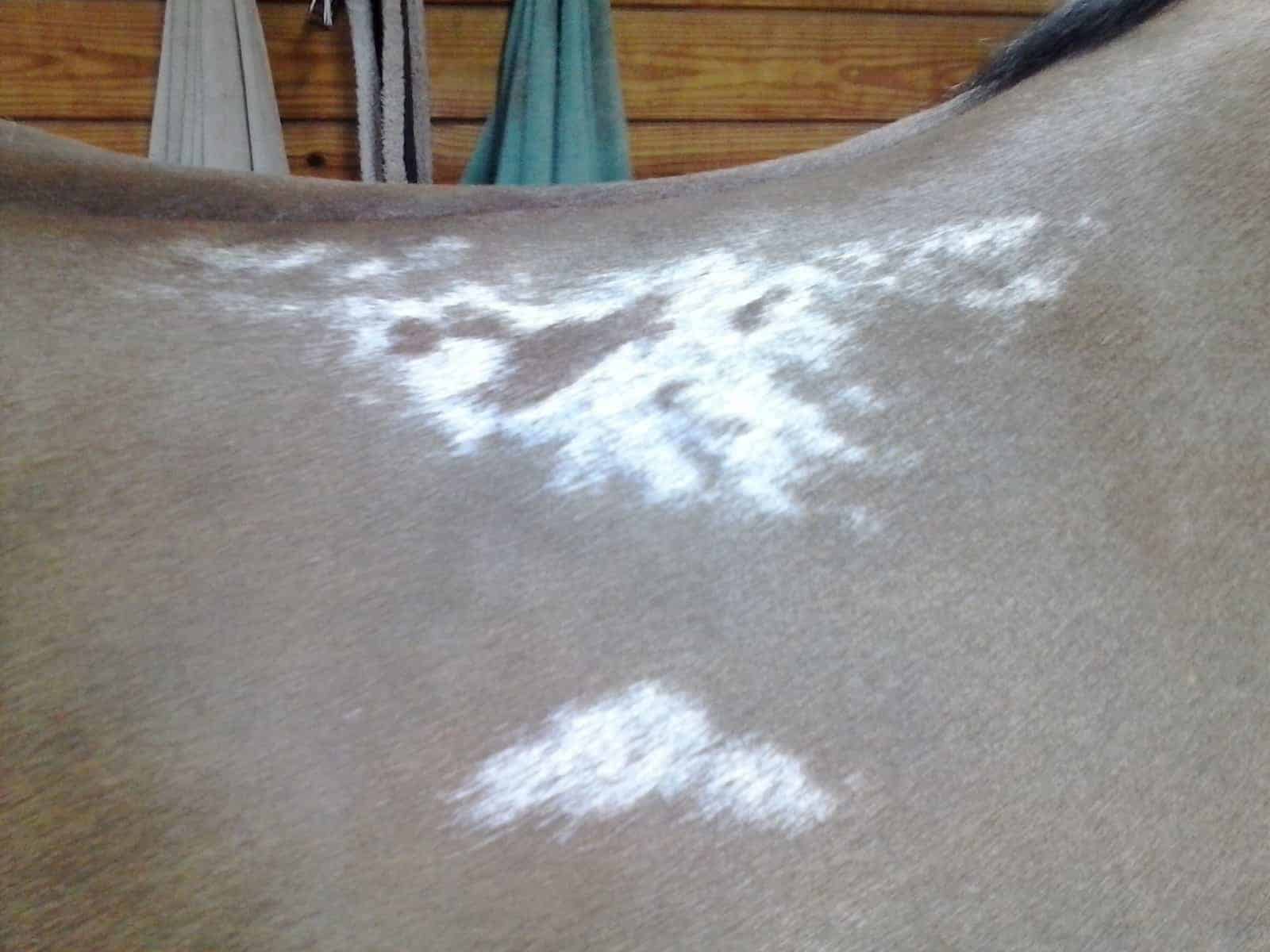Skin Issues That Affect Saddle Fit

Sores, injuries, and infections involving a horse’s back, withers, and/or girth area can make saddling and riding a painful process for your horse. But do you know how to recognize such issues before you tack up?
Annette Gavin, a Society of Master Saddlers (SMS) qualified saddle fitter based in Warfordsburg, Pennsylvania, described saddle sores and skin diseases to look out for during the SMS Introduction to Saddle Fitting course, held May 1-2, in Hagerstown, Maryland.
First, she described skin issues that are directly related to poor saddle fit, including:
- Sores, caused by the point or head of a too-wide saddle tree “falling down” and rubbing the horse’s withers. (By contrast, a saddle that is too narrow will sit too high in front and might create pressure points on either side of the withers.)
- Scarring due to an extended period of poor saddle fit. Early signs of scar-inducing saddle pressure include small swellings and fluid in the skin’s epidermal, or outermost, layer, Gavin said.
- Loss of coat pigment due to saddle friction. Consistent movement of the tack somewhere on a horse’s back causes a change in coat color, but not an actual sore, said Gavin. Dry spots under the saddle indicating a pressure point are early warning signs that your saddle doesn’t fit properly.
- Swelling where the back of an ill-fitting saddle’s stirrup bar meets the horse’s side and causes a pivoting movement.
- Girth rubs or edema (fluid swelling, like a giant blister) that result from a dirty and/or ill-fitting girth. These can be difficult to get rid of, said Gavin.
Other conditions she said to check for before saddling your horse, because of their painful or contagious natures, include:
- Hives, which are welts or wheals horses can develop in reaction to contacting or ingesting something to which they’re allergic. While not contagious, hives can make a horse very uncomfortable, sensitive, and potentially dangerous to tack up, Gavin said.
- Sweet itch, which is a hypersensitivity to Culicoides’ (a tiny biting midge) saliva. Similar to hives, this skin condition is not contagious but can make a horse very sore around the mane, tail, belly, and back areas where it typically occurs. Thus, Gavin warned against saddling affected horses and recommended keeping them covered (e.g., with a fly sheet), housed inside, and placed under fans during periods of insect activity.
- Rain rot, which is caused by a bacteria that likes wet conditions and can develop as a result of a lack of maintenance and/or grooming. While it’s not contagious, it can spread over the horse’s body and cause discomfort.
- Ringworm, an infection that spreads via contact and is characterized by a circular patch on the horse’s skin with a crusty center. To avoid spreading this contagious condition, Gavin urged owners not to touch it or place a saddle over it.
- Rug sores, which develop as a result of continual friction from a poor-fitting blanket and should be allowed to heal before placing a saddle on the horse, said Gavin.
Add an extra minute or two onto your grooming and tacking routine to check for signs that your horse is developing a painful skin problem that could preclude riding. Also know how to recognize whether it’s related to saddle fit or something else, and work with your veterinarian to resolve the issue.

Written by:
Alexandra Beckstett
Related Articles
Stay on top of the most recent Horse Health news with















